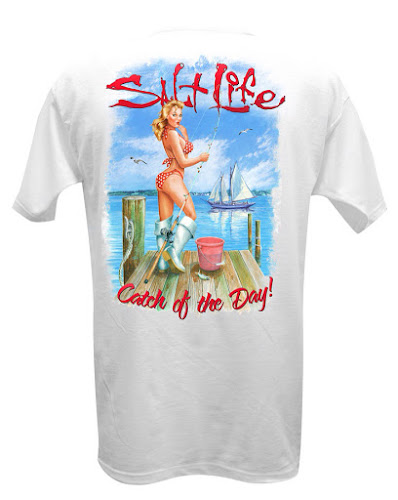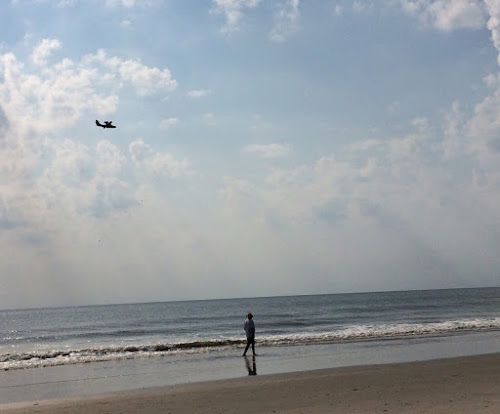We were wandering some back roads around Georgetown as we do and came upon this old rice plantation on the Pee Dee River. Upon looking up information about it, we found out that it is for sale. And even better, the price was reduced from $15 to $11.5 million! (Nothing gauche like a For Sale sign in the yard at those prices!)
Chicora Wood Plantation was first established about 1732 and in 1809 inherited by Robert F.W. Allston.
In 1838 Allston had the original house enlarged and remodeled for his wife Adele and their nine children.
Robert Allston became one of the South Carolina's most successful rice planters with seven rice plantations on the Pee Dee River -- 15,000 producing acres and 630 slaves -- before the Civil War. Allston also became a state senator and representative for 24 years, and South Carolina's 67th governor.
" The manor house and eight existing dependencies were meticulously restored as close to the original as possible based on Allston family records," according to Sotheby's ad for the property.
This photo of the drawing room is from their ad.
Besides 1000 beautiful acres on the river, the property includes: a former school house and caretaker's cottage restored as guest houses overlooking the river, tennis courts, formal garden; the summer kitchen, smokehouse, driver's house, carriage house, rice threshing mill, rice shipping barn and various other barns, and the gatekeepers cabin, all restored to their time period with "the utmost care".
Here is a little more description from the ad:
"Entering the main house the foyer greets you with a grand staircase, a large formal drawing room to the right and an exquisite dining room to the left, each with massive doors, ornate chandeliers and elegant window treatments. The drawing room is a bright and cheerful gathering place with large jib windows that overlook the formal garden and the peaceful Pee Dee. The formal dining room, elegantly embellished, overlooks majestic live oaks adorned with Spanish Moss. The kitchen has a cozy fireplace, abundant cabinet space and opens to a lovely breakfast room. Beneath the house is the “winter” kitchen with original fireplace, mantle, bread oven and root cellar. Through the breezeway is the former servant’s hall, now a large brick-floored bedroom with bath and fireplace. "
Well? Are you getting out your checkbook? Are you ready to move in?
Just a bit more about the Allstons. Too old to fight in the Civil War, Robert Allston continued to produce rice in spite of the fact that the Union blockade of Southern ports made it nearly impossible to get the rice to market. He died in 1864, and when the war ended, the family fled. The property was heavily mortgaged and ransacked and damaged by the freed slaves. However, Adele, his impoverished wife, managed to regain Chicora Wood eventually with the help of one young daughter, Elizabeth.
Interestingly, the daughter returned to the plantation and tried herself to return the family's fields to production of the rice. The fields were overgrown and badly damaged, rice seed, fertilizer, and implements for planting gone, but Elizabeth was determined -- and desperate to keep the land she so loved. A young Southern Belle, she was a woman very much out of her element in farming and running a business, "surviving in a man's works and in a society in upheaval."
In spite of her efforts, for several reasons (a main one being the lack of skilled laborers because freed slaves had no interest in returning to the backbreaking work even for wages) rice was never again a viable crop in South Carolina.
Impoverished and in another effort to save her home, Elizabeth Allston Pringle wrote two books, Chronicles of Chicora Wood about growing up at Chicora and A Woman Rice Planter about her years of trying to bring the rice back into production. I am about half way through the first book and I want it to never end! She is a wonderful writer. Here's a little sample:
"At the end of May my father's entire household migrated to the sea, which was only four miles to the east of Chicora as the crow flies, but was only to be reached by going seven miles in a rowboat and four miles by land. The vehicles, horses, cows, furniture, bedding, trunks, and provisions were all put into great flats, some sixty by twenty feet, others even larger, at first dawn and sent ahead. Then the family got into the row boats and were rowed down the Pee Dee, then through Squirrel Creek, with vines tangled above them, with water lilies and flags and wild roses and scarlet lobelia all along the banks, and every now and then the hands would stop their song a moment and call out, 'Miss, a alligator!'. And there on the reeds and marsh in some sunny cove lay a great alligator basking in the sun, fast asleep. As soon as the sound of the oars reached him, he would plunge into the water, making great waves on which the boat rose and fell in a way suggestive of the ocean itself.
" The way was teeming with life; birds of every hue and note flew from tree to tree on the banks, here and there on top of a cypress, a mother hawk could be seen sitting in her nest looking down with anxious eye, while around, in an ever-narrowing circles flew her fierce mate, with shrill cries, threatening death to the intruder. No one who has not rowed through these creeks in the late spring or early summer can imagine the abundance and variety of life everywhere."
Elizabeth lived on at Chicora Wood until she died in 1921.









































